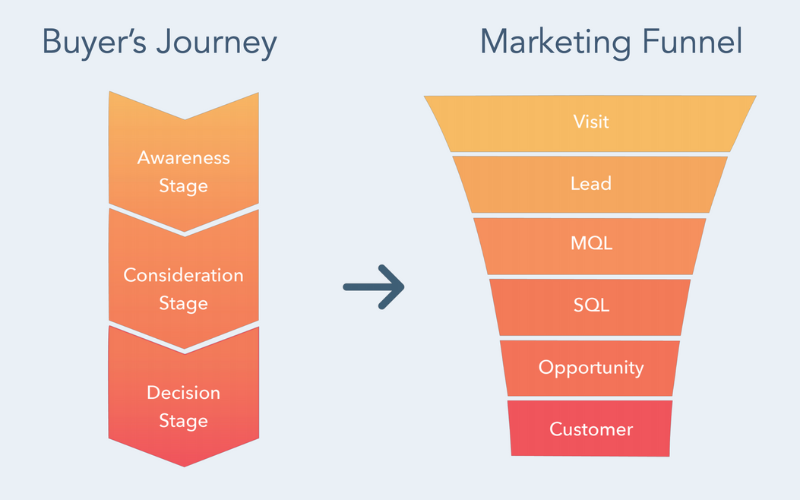In this episode of Demand Gen Studio, we discuss how to effectively leverage video marketing for B2B demand generation by aligning content with the buyer's journey and maximizing content distribution.
Watch on Spotify
Watch on YouTube
The Rise of Video Marketing in B2B
Video marketing has quickly become a cornerstone intent type for B2B demand generation. Once considered a “nice-to-have” format, video is now a must-have for reaching and engaging modern buyers.
- According to Vidyard, 74% of marketers say video outperforms all other content types for driving conversions.
- Forbes reports that 75% of business professionals watch work-related videos on LinkedIn at least twice a week.
- and a 2024 The B2B House study found that 88% of B2B buyers have used video in the past month to learn about products or services.
Video is particularly effective for explaining complex solutions, building trust, and humanizing a brand. It offers a unique combination of visual, auditory, and emotional engagement, allowing companies to connect on a deeper level with their audience.
With attention spans shrinking, short-form video delivers critical information more efficiently than text-heavy formats. Plus, it’s one of the most repurposable content types, easily converted into blog posts, audio clips, or social snippets.
For B2B marketers looking to stand out in competitive spaces, video also presents a higher barrier to entry, which can mean less saturation and more opportunity to own a niche.
Understanding The Conversion Funnel with Video
To use video effectively in B2B marketing, it’s essential to align your content with the stages of the conversion funnel: awareness, consideration, and decision.

While formats evolve, this funnel-aligned strategy remains rooted in unchanging buyer psychology: people need to know you, understand you, and trust you before they convert.
Video Content Strategies For Different Funnel Stages
Effective video marketing requires tailoring your content strategy to each stage of the buyer’s journey.
At the top of the funnel, Awareness, video should focus on first impressions—short, high-level content that quickly communicates who you are and what you stand for. Think brand overview clips or value-driven posts on platforms like LinkedIn to create familiarity and curiosity.
In the middle of the funnel, Consideration, video becomes a tool for building trust and demonstrating value. This is where you can explore how your solution works through product walkthroughs, customer stories, case studies, and content that addresses your audience’s key pain points.
Finally, at the bottom of the funnel, Decision, video should help buyers overcome objections and take action. Use formats like FAQ-style objection-handling videos, proposal walkthroughs, or personalized sales enablement clips to reduce friction and make the buying process feel simple and supported.
The goal at every stage is to deliver the right message, in the right format, at the right time—meeting buyers where they are in their decision-making journey.
The Power of Video in Marketing
Video is one of the most powerful tools in a marketer’s toolkit because it uniquely blends clarity, emotion, and connection.
Unlike static formats, video allows brands to communicate complex ideas in a simple, human way—building trust and reducing friction in the buying process. It’s especially effective at showing how easy it is to work with or switch to your product, which can be a major barrier for B2B buyers.
With visual storytelling, marketers can make their message feel less like a sales pitch and more like a conversation. The emotional resonance of video also helps drive action, particularly when addressing common objections or simplifying next steps.
Ultimately, video isn’t just about sharing information—it’s about creating a memorable experience that moves buyers forward.
Creating Pillar Content for Distribution
To maximize the impact of your video marketing, we recommend starting out with a pillar content strategy.
Start by creating a single, high-value video asset—such as a podcast episode, webinar, or explainer video—and then repurpose it into multiple formats across channels.
Break down the original video into short-form clips for social media, pull key insights into blog posts, extract quotes for newsletters, and use snippets in sales enablement. This not only extends the reach of your content but also ensures consistent messaging across platforms.
Since video requires more effort and resources to create than other content types, planning for repurposing and multi-channel delivery makes sure your effort and time investment pays off.
Getting Started With Video Production
If you're new to video marketing, the most important step is simply to start. Whether you're outsourcing production or handling it in-house, consistency and clarity matter more than perfection.
For organizations with larger budgets, partnering with a professional video production firm can elevate quality and save time. But for smaller teams, in-house video creation is absolutely doable—with basic equipment, a good content plan, and a clear message.
What you should not outsource is your ideas. Your brand’s point of view, insights, and subject matter expertise should come from inside your organization, even if the final video is produced externally.
When it comes to platforms, prioritize where your buyers spend time: YouTube and TikTok offer strong discovery potential, while LinkedIn is becoming more video-forward and ideal for B2B reach. Just remember, your website is a place to host content, not distribute it—distribution happens on platforms where people are already scrolling. Focus on sharing, not just publishing, and your video efforts will go much further.
Key Takeaways
If you're just getting started with video marketing, the most important thing is to begin—slow and steady wins the race. Focus on building a consistent rhythm, even if that means producing just one video per month and distributing it through a single platform.
As you gain confidence and capacity, you can scale both production and distribution. Tools like Riverside and Descript can streamline the editing process and help repurpose video content more efficiently.
Remember, the best content comes from within your company—don't outsource your perspective. For inspiration, look to leaders like Chris Walker, Refine Labs, or Gong that blend education with storytelling.
While B2B can feel serious, incorporating entertaining or creative formats—like character-driven videos or movie-style storytelling—can make your message memorable and boost awareness, just as it does in B2C marketing.
Interested in learning more? Check out the rest of the episodes of Demand Gen Studio. We discuss marketing and demand generation topics, with inspiring interviews with thought leaders. See you next time!




